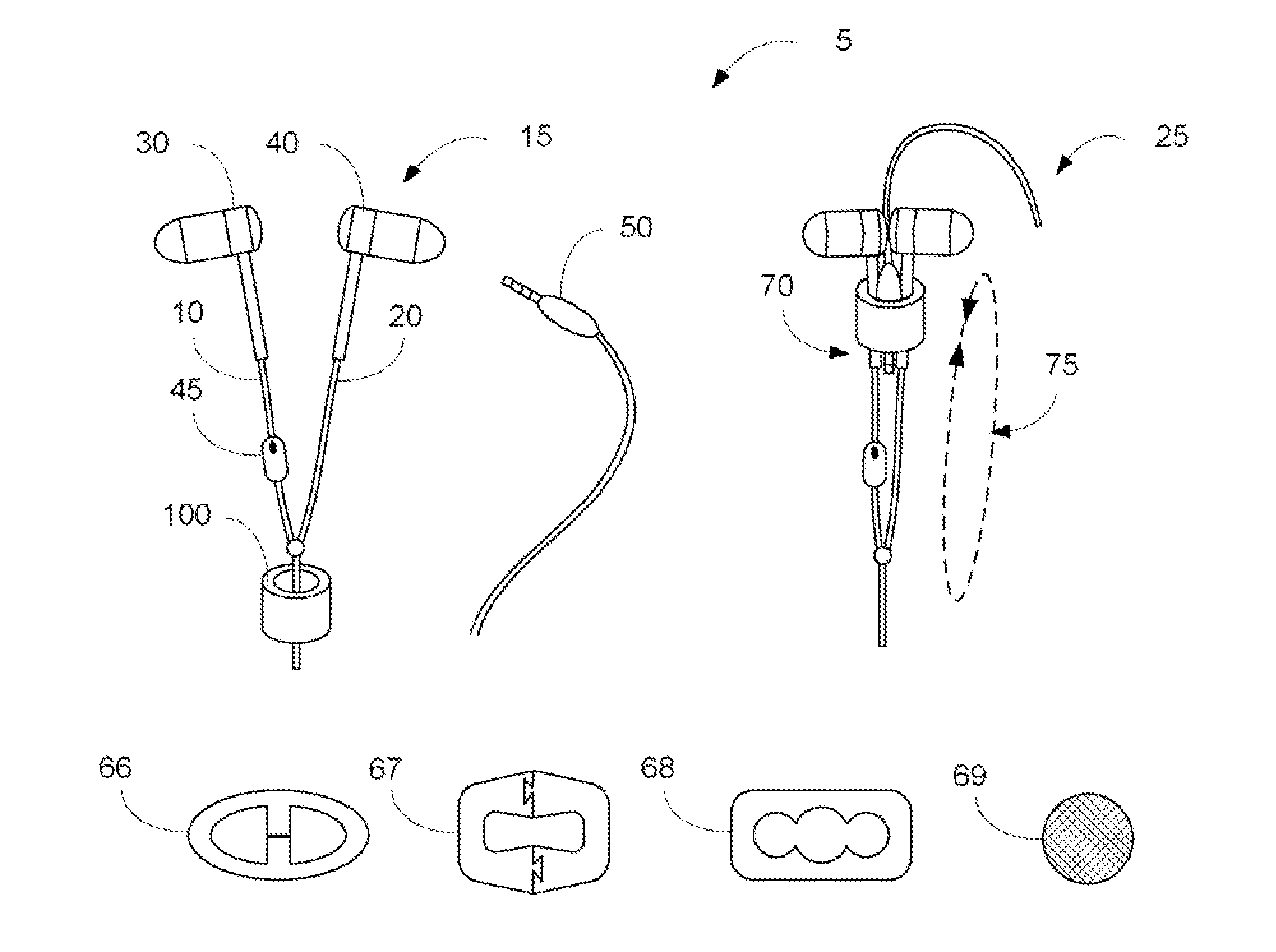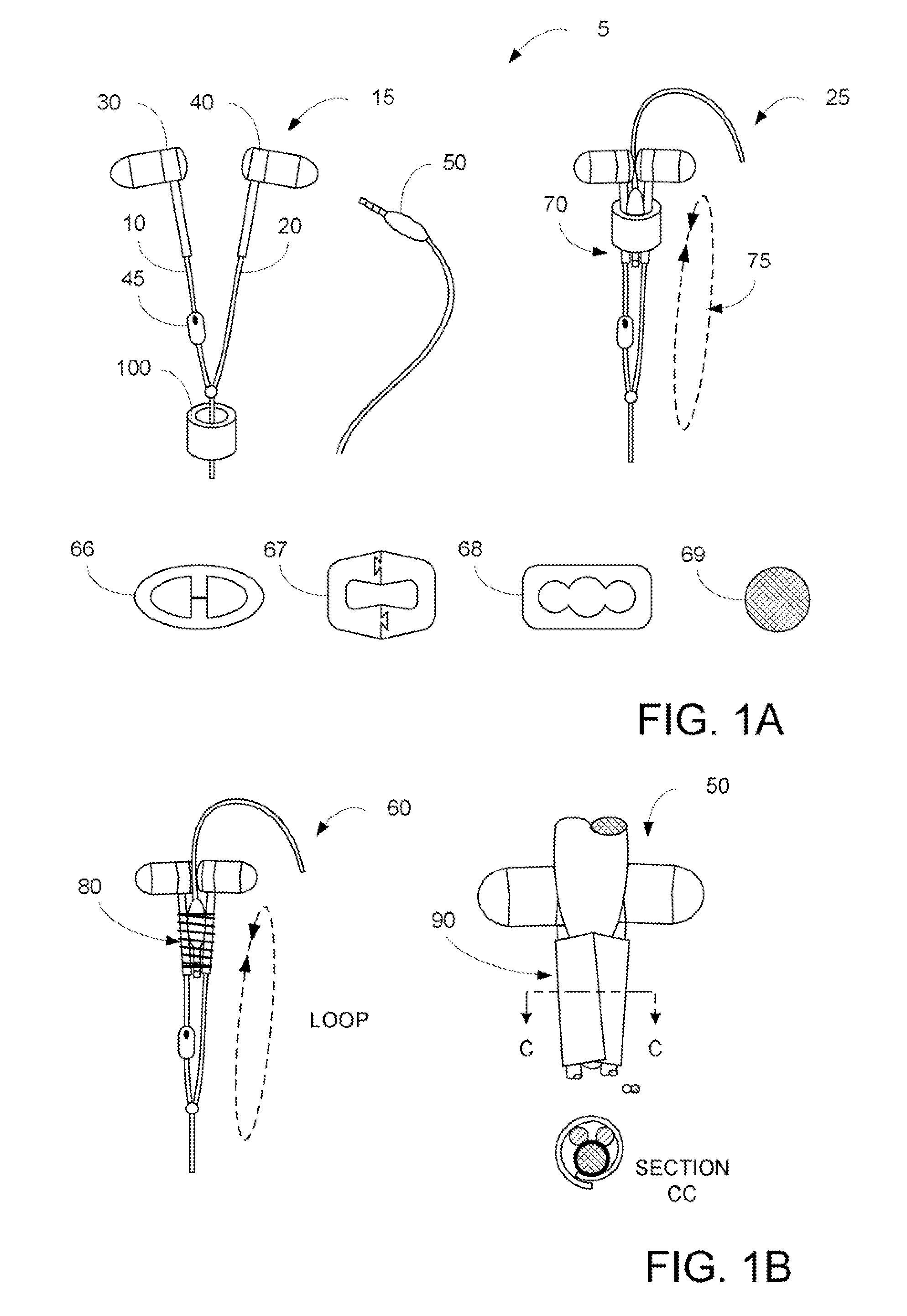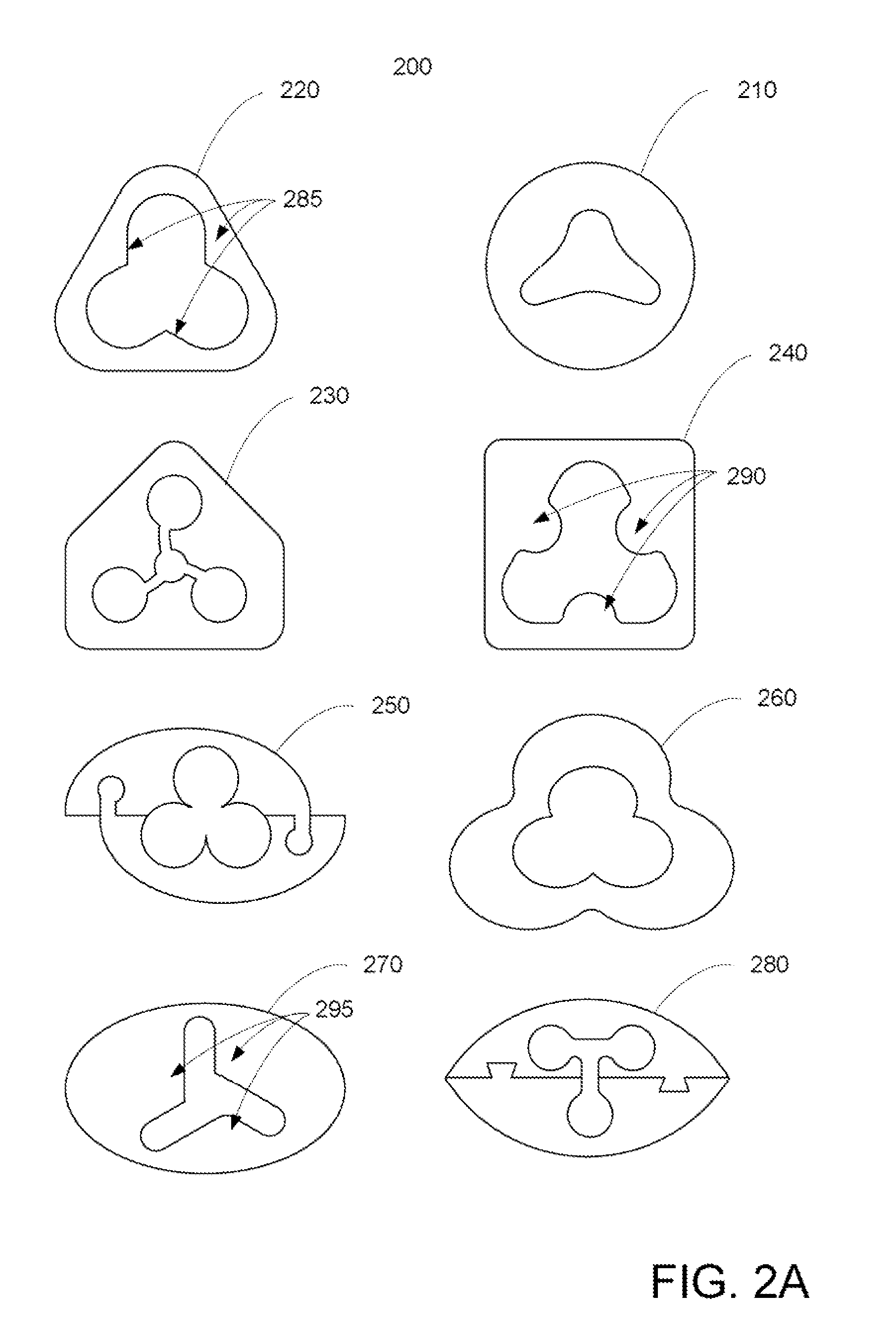Headphone with restraint and methods
a headphone and restraint technology, applied in the direction of transducer details, earpiece/earphone attachment, electrical transducer, etc., can solve the problems of stiff headphone wires, unable to easily move out of the way of users, and headphones still tangle, etc., and achieve the effect of sliding resistance of the restrain
- Summary
- Abstract
- Description
- Claims
- Application Information
AI Technical Summary
Benefits of technology
Problems solved by technology
Method used
Image
Examples
Embodiment Construction
[0016]FIGS. 1A-B illustrates embodiments of the present invention. FIG. 1A illustrates a pair of earphones (ear buds) 5 in different configurations. As illustrated, ear buds 5 typically include ear buds 30 and 40 (that are typically inserted or placed upon a user's ears to provide audio outputs), an audio input (output) 50 (that is inserted into an audio device for receiving electrical outputs), wires 10 and 20 (coupling ear buds 30 and 40 to audio input 50), and (optionally) an in-line microphone 45 (that receives audio input from the user and provides it to the audio input / output 50). In various embodiments, in-line microphone 45 may include additional functionality such as volume buttons, control buttons, or the like.
[0017]In various embodiments, while in configuration 15, restraint 100 is positioned away from ear buds 30 and 40, and does not appreciably restrain ear buds 30 and 40 or audio input 50 with respect to each other. Thus, the user may freely plug in ear buds 30 and 40 ...
PUM
 Login to View More
Login to View More Abstract
Description
Claims
Application Information
 Login to View More
Login to View More - R&D
- Intellectual Property
- Life Sciences
- Materials
- Tech Scout
- Unparalleled Data Quality
- Higher Quality Content
- 60% Fewer Hallucinations
Browse by: Latest US Patents, China's latest patents, Technical Efficacy Thesaurus, Application Domain, Technology Topic, Popular Technical Reports.
© 2025 PatSnap. All rights reserved.Legal|Privacy policy|Modern Slavery Act Transparency Statement|Sitemap|About US| Contact US: help@patsnap.com



